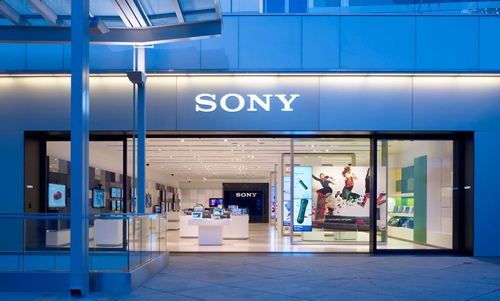When Steve Jobs first visited Sony, he had huge respect for the company and it’s founder. He emulated many aspects of the company and even tried to convince Apple employees in California to adopt Sony’s famous grey ripstop nylon vest uniforms.
On a trip to Japan in the early 1980s, Jobs asked Sony’s chairman Akio Morita why everyone in the company’s factories wore uniforms. He told Jobs that after the war, no one had any clothes, and companies like Sony had to give their workers something to wear each day. Over the years, the uniforms developed their own signatures styles, especially at companies such as Sony, and it became a way of bonding workers to the company. “I decided that I wanted that type of bonding for Apple,” Jobs recalled.
Sony today is not the company it was back then. I would argue that Sony’s ownership of Columbia records distracted them from focusing on the customer. I’m sure greedy music executives insisted on copy protection on Sony mp3 players in order to protect revenues and what resulted was a proprietary MagicGate DRM and Memory Stick technology that confounded users and drove the simple, welcoming arms of the Apple iPod. This was a market that was Sony’s to lose and they did.
There are other stories of a company tripping over itself. A Race to a New Machine chronicles the race between Sony and Microsoft as they each were developing their next generation gaming consoles. Co-authors David Shippy and Mickie Phipps take us back to those days in 2001-2002 when Sony was developing the Playstation 3 and Microsoft their first version of the Xbox 360.
The tale is a painful one. Sony kicked off development of a next generation chip, investing $400 million and partnering with IBM and Toshiba with both Sony and Toshiba sending teams to live in Austin, Texas where they would work side-by-side with IBM engineers targeting to get the new chip ready for release in 2005.
In order to make the partnership compelling for the two other parties, Sony acquiesced to allowing the chip to be sold to other companies, even other console manufacturers. From a review of the the book in the Wall Street Journal,
But a funny thing happened along the way: A new “partner” entered the picture. In late 2002, Microsoft approached IBM about making the chip for Microsoft’s rival game console, the (as yet unnamed) Xbox 360. In 2003, IBM’s Adam Bennett showed Microsoft specs for the still-in-development Cell core. Microsoft was interested and contracted with IBM for their own chip, to be built around the core that IBM was still building with Sony.
All three of the original partners had agreed that IBM would eventually sell the Cell to other clients. But it does not seem to have occurred to Sony that IBM would sell key parts of the Cell before it was complete and to Sony’s primary videogame-console competitor. The result was that Sony’s R&D money was spent creating a component for Microsoft to use against it.
Mr. Shippy and Ms. Phipps detail the resulting absurdity: IBM employees hiding their work from Sony and Toshiba engineers in the cubicles next to them; the Xbox chip being tested a few floors above the Cell design teams. Mr. Shippy says that he felt “contaminated” as he sat down with the Microsoft engineers, helping them to sketch out their architectural requirements with lessons learned from his earlier work on Playstation.
While it’s bad enough that Microsoft was able to essentially “draft” off of Sony and Toshiba as they broke trail on a revolutionary new chip design, the salt in the wound came later when the Xbox 360 was able to launch almost a year earlier because of delays in Sony’s supply chain. Outflanked by Microsoft? Ouch.
I’m happy to learn that Sony has announced a top to bottom re-organization that breaks down the barriers between the professional and consumer product divisions. The focus on core strengths in digital imaging and gaming is a welcome move and taking full control of the Sony-Ericsson mobile phone venture is a good first move. Sony has also put a renewed emphasis on UX which they’ll need as they have launched the Vita OS as a way to connect multiple screens and devices around the living room as Apple.
Taking on Apple is a huge undertaking but if anyone’s going to give it a shot, Sony’s in the best position to do so. Even if the new Sony Style stores popping up at a mall near you seem a tad derivative of the Apple Store experience, remember that what’s old is new and if that means the master is now learning from it’s disciple, that’s ok too.


Leave a comment